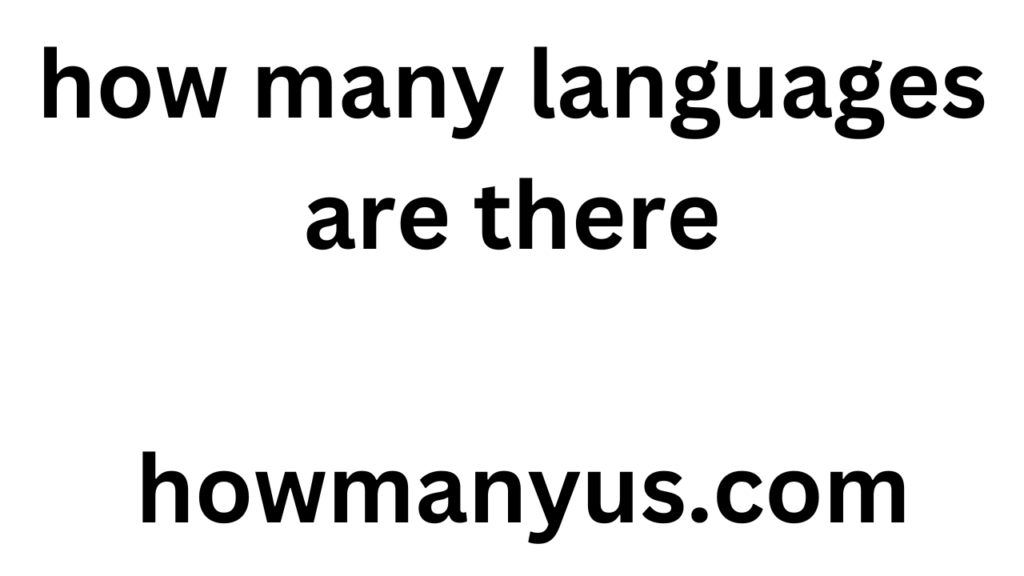how many languages are there

how many languages are there: The number of languages spoken in the world is a subject of ongoing debate among linguists, as it depends on various factors such as how languages are defined and classified. However, it’s generally agreed upon that there are thousands of languages spoken globally.
how many languages are there: Ethnologue, a widely cited resource on languages, lists over 7,000 living languages. These include major languages spoken by millions of people, such as English, Mandarin Chinese, Spanish, and Hindi, as well as numerous smaller languages spoken by smaller communities. However, it’s important to note that this number is not fixed, as languages can evolve, merge, split, or even disappear over time.
how many languages are there: Languages are often grouped into language families based on similarities in vocabulary, grammar, and other linguistic features. For example, English, German, Dutch, and Swedish belong to the Germanic language family, while Mandarin Chinese, Cantonese, and Hokkien are part of the Sinitic language family. The existence of language families reflects the historical and cultural connections among different groups of speakers.
how many languages are there: Some languages are considered endangered, meaning that they are at risk of becoming extinct as fewer and fewer people speak them. Efforts are underway to document and revitalize endangered languages to preserve linguistic diversity and cultural heritage.
In addition to spoken languages, there are also sign languages used by deaf communities around the world. These sign languages have their own grammar and vocabulary and are distinct from the spoken languages used in the same regions.
Furthermore, there are constructed languages, or “conlangs,” which are deliberately created by individuals or groups for various purposes such as international communication (e.g., Esperanto), fictional settings (e.g., Klingon from Star Trek), or artistic expression.
Overall, while it’s difficult to give an exact number, it’s safe to say that there are thousands of languages spoken in the world today, each contributing to the rich tapestry of human communication and culture.

The number of languages spoken in the world is a subject of ongoing debate among linguists, as it depends on various factors such as how languages are defined and classified. However, it’s generally agreed upon that there are thousands of languages spoken globally.
Ethnologue, a widely cited resource on languages, lists over 7,000 living languages. These include major languages spoken by millions of people, such as English, Mandarin Chinese, Spanish, and Hindi, as well as numerous smaller languages spoken by smaller communities. However, it’s important to note that this number is not fixed, as languages can evolve, merge, split, or even disappear over time.
Languages are often grouped into language families based on similarities in vocabulary, grammar, and other linguistic features. For example, English, German, Dutch, and Swedish belong to the Germanic language family, while Mandarin Chinese, Cantonese, and Hokkien are part of the Sinitic language family. The existence of language families reflects the historical and cultural connections among different groups of speakers.
Some languages are considered endangered, meaning that they are at risk of becoming extinct as fewer and fewer people speak them. Efforts are underway to document and revitalize endangered languages to preserve linguistic diversity and cultural heritage.
In addition to spoken languages, there are also sign languages used by deaf communities around the world. These sign languages have their own grammar and vocabulary and are distinct from the spoken languages used in the same regions.
Furthermore, there are constructed languages, or “conlangs,” which are deliberately created by individuals or groups for various purposes such as international communication (e.g., Esperanto), fictional settings (e.g., Klingon from Star Trek), or artistic expression.
Overall, while it’s difficult to give an exact number, it’s safe to say that there are thousands of languages spoken in the world today, each contributing to the rich tapestry of human communication and culture.